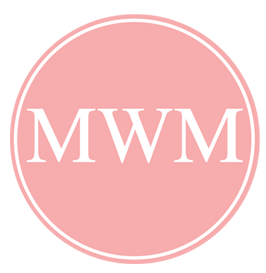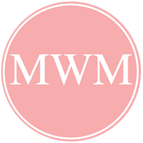There are two ways to eat - American and Continental (also called "European").
When you eat American style you start off holding your fork in your non-dominant hand, and your knife in your dominant hand. To properly hold your fork while cutting turn it over and put your index finger on the back of the fork for leverage in securing the food. Please no holding it like a weapon with clenched fists! To properly hold your knife place your index finger on the joint where the blade and handle meet. You can go up about an inch if you want - but no more - for leverage in cutting. After you cut (one piece only at a time) you lay your knife across the upper part of the plate and switch your fork to your dominant hand and eat, holding your fork like a pencil with the tines up. Some call it the "zig-zag" way of eating because you switch your utensils from hand to hand. While eating, place your free hand in your lap.
When you are at "rest" - not eating - you place your fork and knife on the plate parallel to each other but with some space in between. The knife is laying across the top (think of the knife near 1:00 if the plate is the face of a clock) while the fork is in the center of the plate (near 4;00). When you are "finished" with your meal place your fork and knife at 10:20 with the tops at 10 and the handles at the :20 spot. The knife blade faces in and the tines of the fork are up.
When you eat Continental/European style you keep your utensils in the same hands - never switching off. The fork goes in your non-dominant hand. When you are done cutting you keep hold of the knife but lift your hand with the fork up to your mouth and pivot your wrist to convey the food into your mouth. This is an initially more difficult way to eat since your fork is always tines down - so the food has to be packaged on the back of your fork. Your knife is the "pusher" whose job it is to combine all your food on the plate (meat is the anchor, then the veggies and sides are added) and push the food onto the back of the fork. But some really like this way of eating because Europeans eat this way, it is efficient, and it is more quiet. But if you have trouble eating slowly, you need to be doubly mindful because there is no natural break in eating like with the American style. For the "rest" position, place the knife and fork down so you create a little "X" on the plate with the tines of the fork down and over the knife blade, which is facing in. The "finished" position is also 10:20 but the tines of the fork are down.
Eating either way is being marvelously well-mannered - as long as you also sit up straight, eat quietly, and chew with your mouth closed. Elbows off the table!
Which way do you eat - have you ever tried the "other" way?
Sunday, February 13, 2011
Monday, February 7, 2011
SOCIAL SKILLS EQUAL A HAPPY LIFE? THEY CERTAINLY HELP.
A comprehensive analysis of 33 studies recently revealed what we have always believed from the start, that teaching children proper interpersonal skills better prepares them for life. These skills are the basics that prepare your little ones for life's great adventures. Check out the blog MaryCatherine posted on the subject almost a year ago - last March! Her mother instilled them into MaryCatherine's family, and MaryCatherine has paid it forward to ours. We are forever grateful.
As MaryCatherine blogged, "while these interpersonal skills should be taught right from the get-go in life– they hold hands with manners as they go for their daily walks - it is never too late to learn them." But oh how much easier life is when you learn them at a young age.
Here is the article. How important do you think "soft skills" are in your daily life? What do you think of people that lack this skill set?
As MaryCatherine blogged, "while these interpersonal skills should be taught right from the get-go in life– they hold hands with manners as they go for their daily walks - it is never too late to learn them." But oh how much easier life is when you learn them at a young age.
Here is the article. How important do you think "soft skills" are in your daily life? What do you think of people that lack this skill set?
Tuesday, February 1, 2011
IT ISN'T MARVELOUSLY WELL-MANNERED TO MISLEAD OTHERS.
 |
| buy napkins here |
I find it unacceptable, and, frankly, mean, when people pass off non-facts as facts. Especially when it comes to manners and etiquette. Some people already feel a bit overwhelmed with the whole subject matter to begin with and and it makes matters infinitely worse when those who profess to be "experts" in the area of etiquette mislead those who seek out their wise counsel.
Case in point, I love etiquette books. I have a small library full of them. And I read them. Over the weekend I read the latest addition to my collection and spotted more than one wrong passage. For example, the book stated that, "[n]apkins are laid, unfolded, to the right of the plate when you excuse yourself from the table momentarily" and to "place the napkin so that the soiled portion is facing down on the table." What horrid advice. Let's set things straight. Napkins are to be laid, unfolded, on the seat of your chair when you excuse yourself from the table mid meal. If you use your napkin properly the soiled part is always in between the folds and never in threat of being in view by anyone.
It is not marvelously well-mannered to mislead people on the rules of etiquette. What are some of the stranger "rules" you have been told, that turn out to be incorrect? Let's nip them in the bud one at a time.
TOO MUCH OF A GOOD THING....
“It's far more impressive when others discover your good qualities without your help.” What a great quote from Miss Manners. Self-confidence is a wonderful attribute. Most people need more of it. But some have been blessed with too much of a good thing. To me, being boastful is being a big bore. Don't you agree?
Subscribe to:
Posts (Atom)



